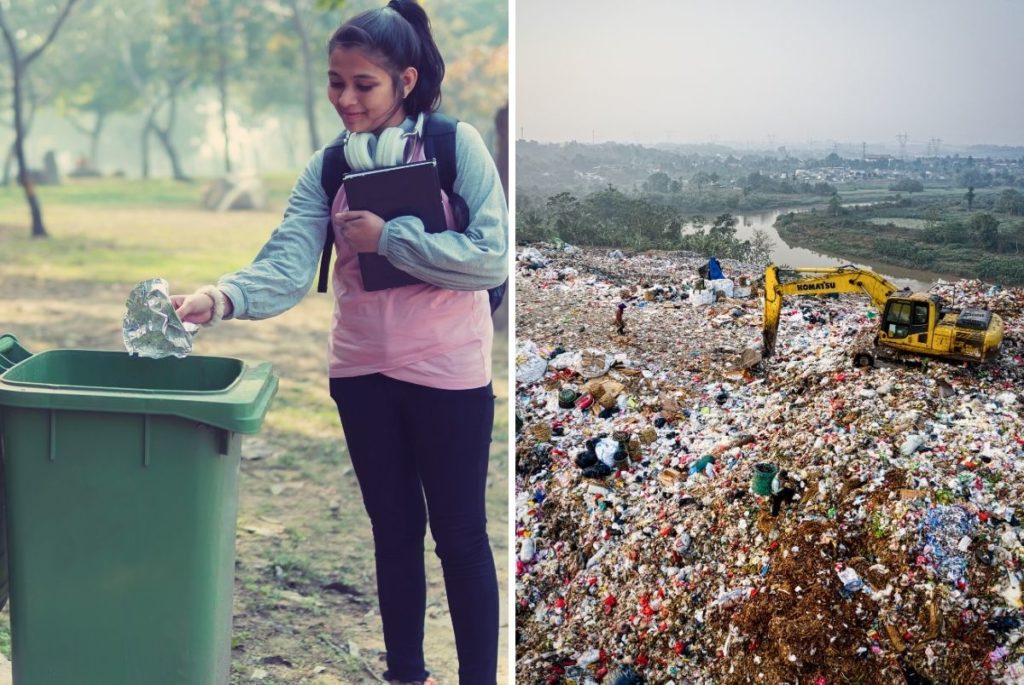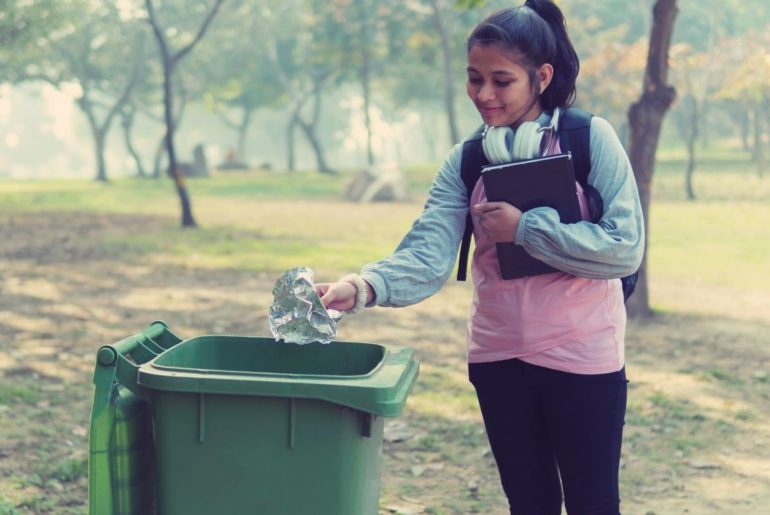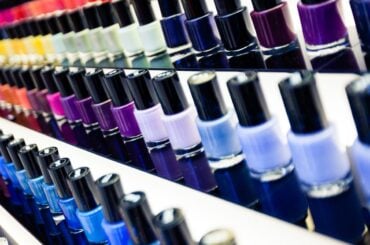Kids are naturally curious about how things work (not to mention, most of them have a mild obsession with the neighborhood garbage truck!) so America Recycles Day is a great time to answer one of their biggest questions—Where does our trash go?
Read on, and we’ll tell you step-by-step exactly what to say to explain the answer—and help your kids understand why recycling and caring for our planet is so important.
Where does my trash go?
When we think about throwing something away, we usually picture putting it in a trash can. But it doesn’t end there—so, where is “away?”

The truth is, about 728,000 tons of garbage that we put into trash cans in the U.S. actually ends up in landfills—every day.
So, what’s a landfill?
It’s basically a hole that the city pays a company to dig, to put our trash into.
The biggest landfill in the U.S. is in California. It’s 500 feet tall and covers 700 acres—that’s taller than the Statue of Liberty and bigger than 530 football fields!
Among other environmental problems, landfills release methane gas (which contributes to global warming) and they create a toxic, slimy chemical liquid called leachate (pronounced leech-ate).
Sounds gross, right?
Yeah, it is. Leachate comes from water seeping through the compacted piles of trash. By the time it reaches the bottom, it’s full of everything from the grease on our hamburger wrappers to paint, pesticides, battery acid, and anything else in our garbage.
Landfills do have liners, but they can be punctured or dug through by burrowing animals—so there’s always a concern the leachate could get into our soil and water. And either way, animals can get into the chemicals and get sick.
After a landfill closes, the company that ran it only monitors it for 30 years (even though stuff in it, like plastic bags, can take 1,000 years or more to decompose—and Styrofoam never decomposes). Then it’s the community’s problem to clean up.
So what can we do instead?
Luckily, about 35 percent of our trash gets recycled! Before going to the landfill, it’s put on big conveyor belts and the recyclables are separated out by people, and tools like infrared lights, strong fans, and industrial magnets.
The lights scan for recyclable plastics, the fans blow debris and wrappers off bottles, and the magnets find metal cans. It’s all cleaned up and made into brand new stuff—using WAY less energy, and keeping all that trash out of landfills.
That’s all great—but the Environmental Protection Agency (EPA) estimates that 75 percent of our trash could be recycled, so there’s a lot of room for us to do better! Here’s how…
Reduce: Reducing the amount of trash we create can mean choosing products that last longer, buying things that don’t have excess packaging, using washable straws instead of disposable ones, or asking your grown-ups to “go paperless” so they get bills in their email instead of on paper in the mail.
Reuse and repair: Before throwing something away, see if it can be fixed or given a new purpose instead. You can also do things like taking a reusable canvas bag when you go shopping so you don’t have to use the store’s plastic bags.
Recycle: Not only can we recycle our trash, but our clothes, shoes, and even cars (!) can be recycled by donating them to resale shops or charities. If you have space at home, you can compost food scraps and yard waste, too.
Try these activities with your child:
- Find out where the trash goes in your local area. Where’s the nearest landfill? How big is it, and how much longer do they expect to use it before it’s full? (You can find this info on your city’s waste management website.)
- Look up some facts about trash or recycling that are surprising. For example, recycling just one aluminum can saves enough energy to power a TV for 3 hours!
- BONUS: Using those facts and your creativity, play “2 Truths and a Lie.” Take turns pairing 2 real facts with one “fact” that you made up—the other person has to guess which 2 are true and which one isn’t!
Reflection Qs to ask your child:
- When you throw something away, where would you say “away” is now?
- Have you ever thrown something away that could have been recycled or reused?
- What’s one way we could reduce, reuse, or recycle at home that we aren’t already doing?
- If you had a shirt you’d outgrown, what are 2 things you could do with it that are more environmentally friendly than throwing it in the trash?







